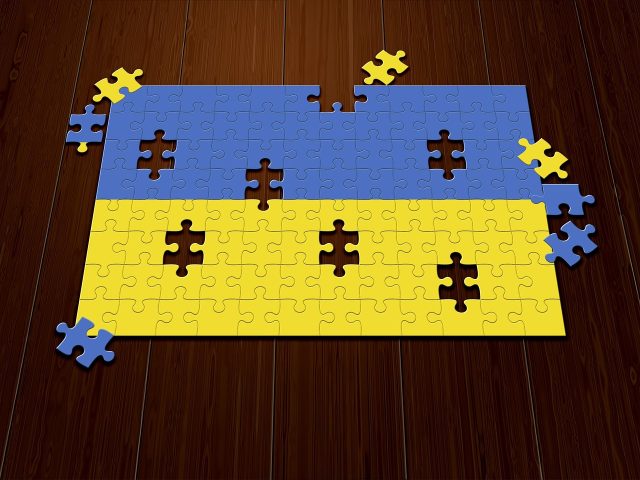
The current phase of the conflict in Ukraine represents a turning point not only for the geopolitical balance in Europe, but also for the solidity and strategic direction of the Atlantic axis. The recent NATO Defence Ministers’ Summit, along with the intensified political dialogue between Washington, Brussels and Kiev, confirms that the Ukrainian issue has become a test of the coherence and effectiveness of Western alliances. In this context, the relationship between the United States, the European Union and the Atlantic Alliance takes on crucial importance: not only does continued military support for Kiev depend on it, but also the possibility of initiating, in the near future, a credible path toward a ceasefire and peace negotiations.
STRENGTH AND DIPLOMACY
The current phase of the international confrontation demonstrates a dual movement. On the one hand, the West continues to strengthen its political and military support for Ukraine in the belief that only a position of strength can force Moscow to reconsider its territorial ambitions. On the other hand, there is a growing awareness that a prolonged war will erode domestic consensus, make the economic costs unsustainable and risk compromising the continent’s stability. It is within this dialectic that the evolution of relations between the United States, NATO and the European Union takes place, now called upon to combine strategic firmness with diplomatic openness.
THE ROLE OF DONALD TRUMP
The US administration, led by President Donald Trump, is reorienting the Western approach to the crisis. While reaffirming Washington’s commitment to supporting Kiev, the White House intends to redistribute the economic and military burden among its allies, pushing Europe to translate solidarity into concrete contributions. The call for a more equitable commitment, also advanced by the Pentagon, reflects a key principle of Trump’s vision of foreign policy: peace as the result of strength and deterrence, not accommodation. In this sense, the American president aims to strengthen the West’s defensive posture, but at the same time presents himself as a potential mediator capable of reopening negotiating channels with Moscow.
TECHNOLOGICAL COOPERATION AND MILITARY DETERRENCE
The potential supply of long-range missiles and the strengthening of technological cooperation with Kiev, particularly in the drone sector, respond to a dual rationale: ensuring Ukraine’s ability to resist in the field and, at the same time, paving the way for a diplomatic solution that does not appear to be a surrender. The stated goal of “achieving peace through strength” reflects a doctrine of strategic realism that aims to de-escalate by maintaining military pressure. This approach highlights the desire to combine firmness and pragmatism, laying the foundations for a future balance between defence and diplomacy.
EUROPE BETWEEN STRATEGIC AUTONOMY AND COHESION WITH NATO
On the European front, the response appears more complex but no less significant. The European Union is accelerating the construction of a common anti-drone defence system, a key element for the protection of the eastern flank and the continent’s strategic autonomy. The plan to complete the so-called “drone wall” by 2027 demonstrates Europe’s desire to take a more proactive role in collective security. Furthermore, cooperation with NATO is intensifying, overcoming traditional institutional rivalries. Complementarity between the Atlantic Alliance and European defence policy is now essential for supporting Kiev and, at the same time, ensuring the continent’s stability.
SHARED LEADERSHIP FOR PEACE
Germany’s commitment to strengthening air surveillance and financing new defence investments confirms that the European approach is evolving toward greater cohesion. However, American leadership remains crucial, both for operational capabilities and for the political coordination role that Washington exercises within NATO. Looking ahead, strengthening the transatlantic axis could pave the way for a new phase of the conflict: that of diplomacy. While increased military aid serves to stabilize Ukraine’s position, US activism – and particularly Trump’s willingness to assume a negotiating role – opens the possibility of a monitored ceasefire and multilateral negotiations.
THE STRENGTH OF UNITY AS AN INSTRUMENT OF PEACE
The future of peace in Ukraine will depend on the West’s ability to maintain a balance between firmness and pragmatism. The United States, the European Union and NATO, acting in coordination, can not only consolidate the defence of the eastern front but also promote a credible diplomatic solution capable of reducing global tensions. In this scenario, Donald Trump presents himself as both a catalyst for disruption and a potential mediator: a leader who, with his direct and transactional approach, could attempt to transform military pressure into a lever for peace. The recomposition of the pro-Kiev axis, therefore, represents not only a strengthening of Western solidarity, but the beginning of a new strategy aimed at building the political and security conditions for a sustainable ceasefire and the beginning of a negotiated peace, in which the Alliance’s strength finally translates into stability.



 Subscribe
Subscribe